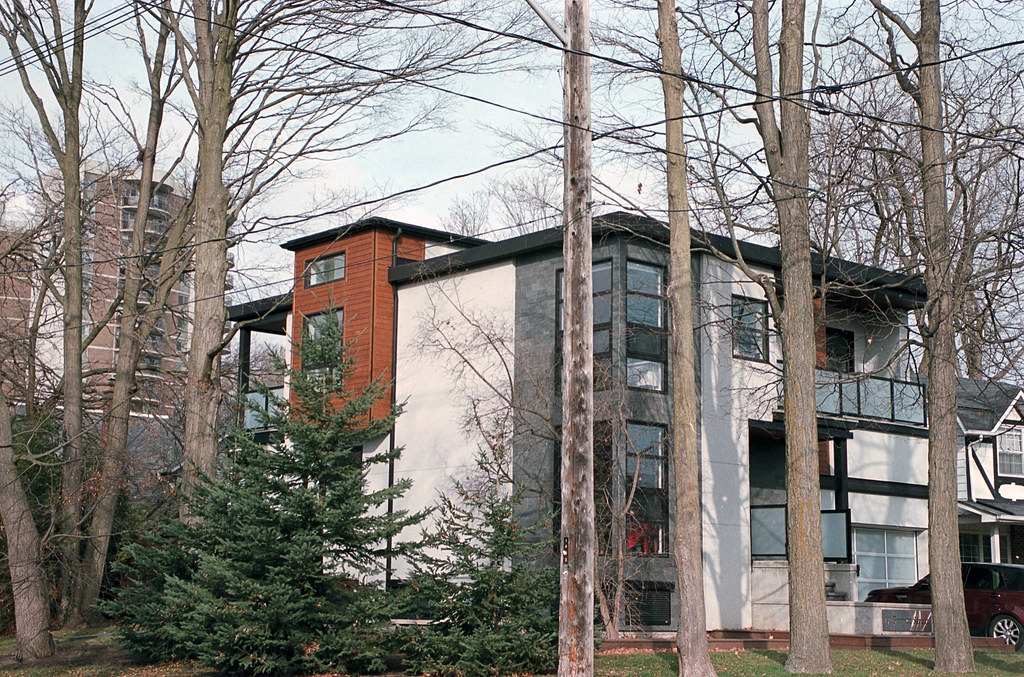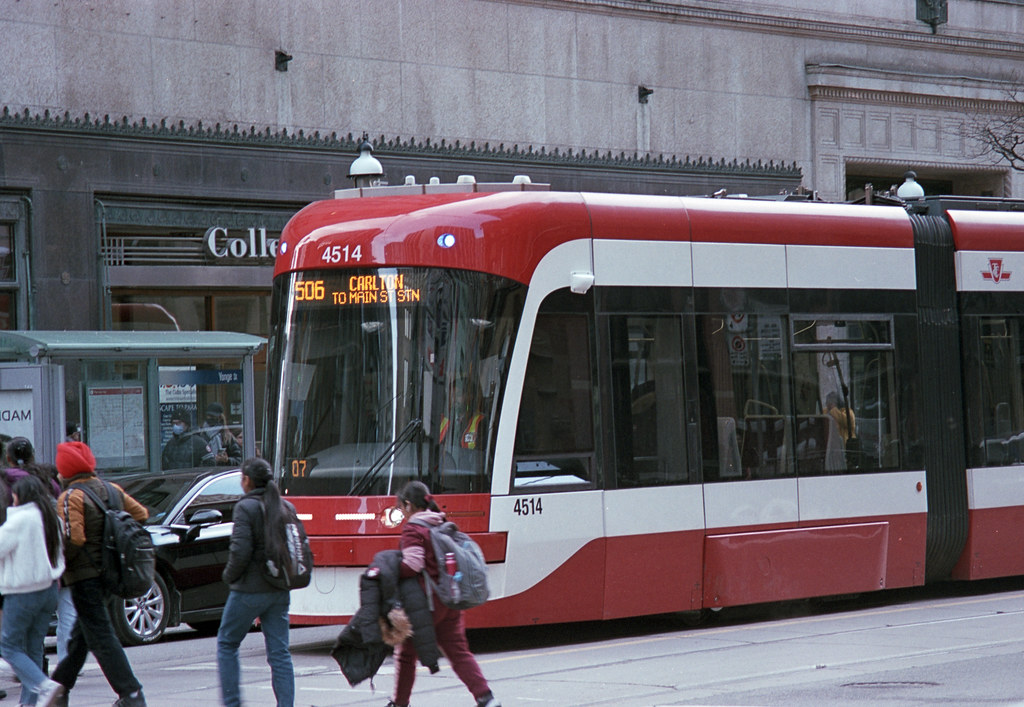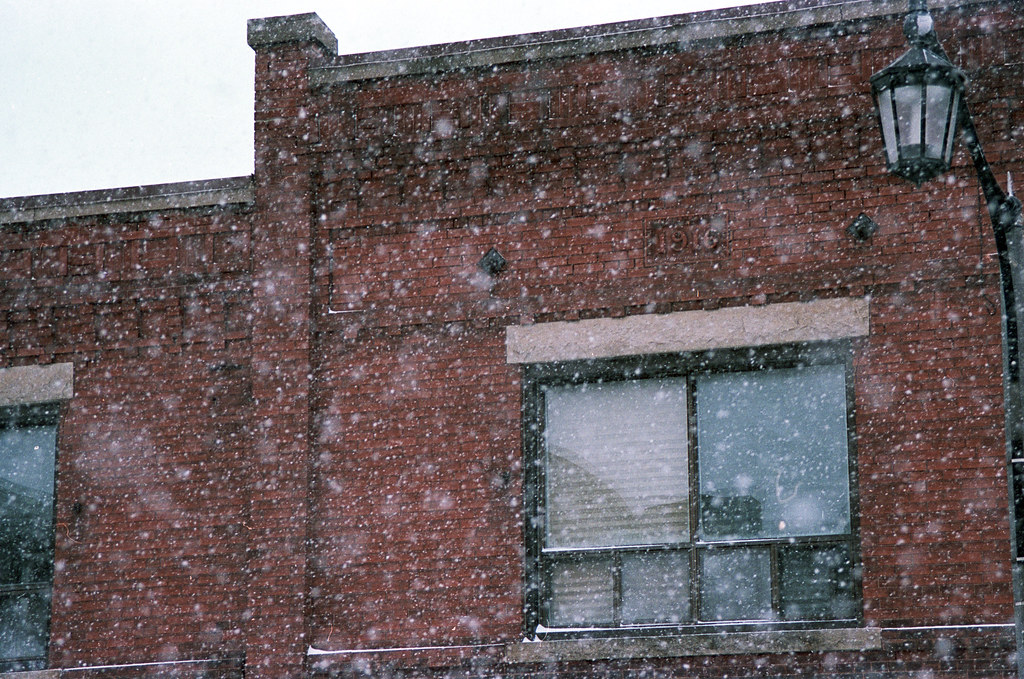Christmas came early last year with the latest film offering from the Finish film photography store KameraStore. SantaColor 100 is a modern, fresh colour negative film designed for aerial surveillance. While not available to the general public, large orders allow suppliers to purchase and re-spool this film stock for public consumption. And with all the trouble last year getting colour negative film, having another option is always good. It’s an open secret that SantaColor 100 is Eastman-Kodak Aerocolor IV 2460 and that it’s been made available under multiple brands, Silberra Color 100, FlicFilm Electra 100, and FilmWashi X. As a technical film, SantaColor is unique as it has a clear base, not the typical orange base of colour-negative films. For the sake of this review, I’ll be shooting four rolls at four different speeds to test the latitude, ASA-50, ASA-100, ASA-200, and ASA-400.
Film Specs
Type: Colour Negative (C-41), Aerial Surveillance Film
Original Film Stock: Kodak Aerocolor IV Color Negative Film 2460
Film Base: ESTAR (Polyester) with Gel Backing
Film Speed: ASA-100, Latitude: +2 Stops
Formats Available: 135 (35mm)




Colour Rendition
Overall I love the colour rendition of this film; it’s not overly punchy, but not too soft either. The one thing it does have is a bit of leaning towards cyan, which depending on how you have exposed the film, will determine how well you can compensate for this bias. Despite that cyan leaning, there is enough representation of the reds that make the film pleasing for skin tones; combined with good grain structure and medium contrast; this is a solid choice for portraiture. But as I shot this film in four different ways, I can better show how the film behaves regarding colour. On the first roll, I over-exposed by a stop, shooting at ASA-50, with no compensation in development; the negatives were over-cooked. And that look carries through into the colours, you have a heavy leaning towards cyan which I struggled to account for, so they aren’t my favourite images for this review. Once I shot the film at its box speed of ASA-100, I started to understand how it handled the world better. And while you still have that cyan cast in the highlights, even the automatic adjustments in Silverfast 9 and Photoshop could better manage these and make things look natural. Once you go to ASA-200, things start to look far better; that cyan cast, while still present, is much less noticeable and much more easily corrected. And the best part is that the colours retain their natural look, nothing too punchy. And they even look good when shooting at ASA-400, with much cleaner reds, under heavy overcast lighting.




Image Quality
It should come as no surprise that SantaColor 100 has impressive image quality. Not only do you have a long latitude and range of forgiveness to correct for exposure errors. This film has a beautiful grain, and that is at any speed. At ASA-50 and ASA-100, the grain is almost impossible to see in the scans and under a loupe. And even with a one and two-stop under-exposure, the visible grain is not distracting and pleasing. The tonal separation is decent, adding to the overall image’s sharpness. The contrast is fantastic when shot at box speed, not too high or too low. It’s the perfect middle ground that makes everything look beautiful. Once you start over and under-exposing, it affects the contrast, but not much. There’s only a slight change once you begin under-exposing the film; even at ASA-200 and ASA-400, the contrast only gets better without too much trade-off.




Scanning
Thanks to the ESTAR base, the film is delightfully easy to scan as it lays perfectly flat in my scanner holders. While I didn’t try scanning the film using my Nikon Coolscan V ED, the Epson V700 and Silverfast 9 SE did an excellent job. While scanning and processing colour film is not my favourite, SantaColor 100 was not too difficult to adjust. Of course, I had the most work to do with the ASA-50 film; not adjusting in development did not do well for the film, and it looked over-cooked in the pre-scan. But I could pull out details with a bit of adjustment in Silverfast. This continued into Photoshop, the biggest issue being adjusting for that cyan cast, which I did not eliminate. At ASA-100, these were the easiest to handle through post-processing, with only a bit of work done in Silverfast and Photoshop. And it only gets easier when you have the film at ASA-200 and ASA-400; with more excellent scans, the colours are much easier to adjust along with the levels. And at ASA-400, you don’t have to worry about increased colour noise introduced during scanning. And for the most part, I could make the adjustments using Photoshop’s automatic functions without having to change things by eye manually.




Overall Impression
SantaColor 100 is a film you can shoot all year round without trouble. It is a surveillance film designed to work under even the worst conditions and pull out usable images. Shoot it at ASA-100 in the late spring through the summer. Bump it up to 200 for the fall and 400 for the dull grey days of winter. The one thing I would not do is over-expose the film, don’t go below ASA-100, and if you do, make sure to pull your development by a stop. While the box says ASA-100, I think the ideal film speed for SantaColor 100 is ASA-125. Overall, I’d rate the excellent latitude of SantaColor as ASA-100 to ASA-320 without needing to adjust your development time. SantaColor and CineStill 400D are two colour films I’m excited about exploring more, and with both having a lot of different channels to buy them, you can find them at the price point and shop of your choosing. If I were to get this again, I would probably pick it up through Flic Film to support a Canadian company. I can also see this film working well to cross-process using either E-6 chemistry or the ECN-2 process. As I mentioned in the introduction, you can pick up AreoColor IV under multiple names, and if you have connections might be able to pick up a bulk roll of your own to re-spool yourself. And if you love colour film but aren’t too fond of lack of supply and cost, this might be a viable and versatile choice.
Further Reading
Don’t just take my word on Kodak AeroColor IV 2460; you can check out the reviews by other excellent camera reviewers!
35mmc – News: SantaColor 100 – New 100 ISO “Professional Grade” Colour Film Available to the Masses

Dear Alex, thanks for this nice review and for sharing your beautiful shots! Sorry, one thing is not clear to me: when shooting @ 200 or 400 ISO, did you have the film push processed or was it underexposed?
Thanks
Martino
Thank you for the kind words! I under-exposed the images at ASA-200 and ASA-400, but had the lab make no adjustments when processing. So they were simply under-exposed but not push-processed.
Hello Alex,
I bought this film last year as well, but only used it at 100ASA.
Thanks to this excellent review, I decided to try this film at 400 ASA because I wanted to make some low light / night shots. I decided to push process it and added 60 seconds to the normal develop time. I procees myself, so that was easily done. I am veru happy with the results and fully support your verdict. It si very versatile and surprisingly low amount of grain.
I posted some of the photo’s on Flickr:
https://www.flickr.com/photos/hasselbladuser/54175967296/in/datetaken-public/
Hello Alex,
What an excellent and insightful review of this fascinating film. The first thing I noticed was the cyan cast of the images you presented. It reminds me of some of the odder types of films my friend and I would shoot with in the early 1970s to see what results we’d get. Kepp up the great work and I’m looking forward to your next review. Kind regards, Dan